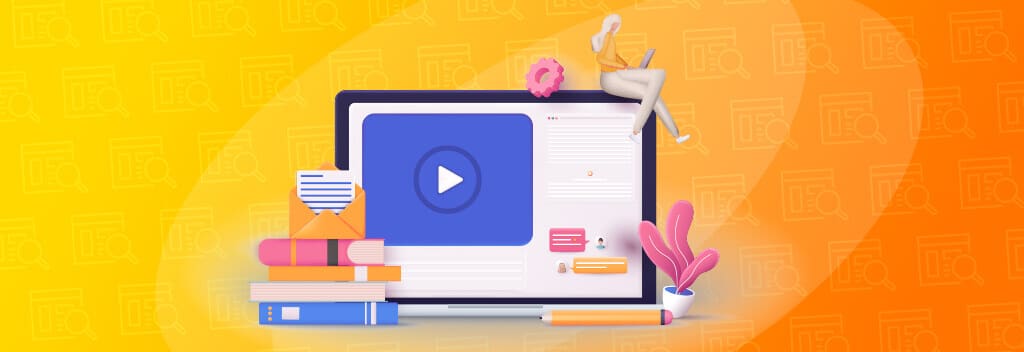At Bop Design, we are big proponents of inbound marketing for lead generation. A major component of inbound marketing is content marketing and content creation.
In this article, we take a look at B2B content marketing practices that work and why they are effective.
Thought Leadership Articles
When most B2B marketers talk about content marketing, thought leadership articles are at the center of their strategies. Thought leadership articles aren’t sales pieces, rather, they are educational content pieces (copy, video, illustrations, etc.) that share experienced insights with the reader. These types of pieces can range in length, but the main thing they have in common is that an experienced industry insider is sharing their expertise and knowledge.
Why are thought leadership articles effective content marketing pieces? Essentially, they showcase the expertise of your team, educate the end-user, and build up your firm’s credibility in your industry. These work better than sales sheets or brochures because the reader or viewer is gaining access to information that will help them in their job, whether it’s making a decision, how to use a product or service, understanding industry trends, or a myriad of other relevant topics. Thought leadership content helps to build trust with your prospect and positions your business as a knowledgeable industry leader.
Read more: 10 stats to consider when building a B2B content marketing strategy.
Explainer Posts
Explainer posts, whether they are long-form articles, shorter blog posts, or how-to guides work well in a content marketing strategy as they walk the end-user or prospect through how to use or leverage certain products or services.
Why do explainer pieces work well for B2B firms? These are not sales pieces but can be effective in getting the potential buyer more comfortable with how a product works, what a particular product or service entails, and what to expect. B2B products and services tend to be more complex and specialized, so these types of content pieces are essential to educating a potential buyer or end-user.
Downloadable Guides
For many in the B2B marketing space, downloadable guides are viewed as top-of-funnel lead generators. While this may be the case for gated content pieces (guides only accessible after completing a form), these types of guides are also great giveaway content (i.e., ungated and accessible without trading an email address). Whether they are gated or not, downloadable guides are a fantastic opportunity to really “guide” the user (see what I did there) along their journey to deciding whether a product or service is right for them.
Guides will vary widely depending on who the target audience is, the product or service, and the industry. For example, a marketing guide may only be 10-12 pages, whereas a guide on how to install an airborne server will likely be 50+ pages or more.
Here is an example of a guide on how to find a B2B website agency: https://www.bopdesign.com/resources/library/b2b-website-buyers-guide/
Why are guides a worthwhile addition to a content marketing strategy? With all the noise out on the internet, it’s tough to get accurate, helpful information that isn’t just a poorly disguised sales pitch. Professionally created guides that share actual steps, best practices, or clear processes offer tremendous value to the target market. It’s a resource they can take away from their search, follow, and implement best practices. It’s free expertise without the salesperson following up with them continuously.
Case Studies or Use Cases
“How are other people using your product or service?” “What kind of results are your existing clients getting?”
These are two common questions that buyers often ask. For this reason, case studies or use cases are essential pieces to craft as part of a B2B content marketing strategy. These can vary in length, detail, and even anonymity. While these are often considered sales pieces for the middle to bottom-of-funnel lead nurturing, they really sell the value of your products or services. The best use cases or case studies rely on objective facts, data, and analysis. Some may even highlight a roadblock in the usage and the end solution to the roadblock.
While the purpose or outcome of your product or service may be clear to you, and even the end-user, there are likely others in the decision-making pool who want to know other applications or what type of ROI they can expect. These are crucial, yet effective, content pieces as they help the end-user of your product or service build a case internally to their leadership. Your sales team may not be able to get all the decision-makers in a meeting, but these content pieces will certainly be shared with all those who have a stake in the decision.
Social Media Activity
We live in a hyper-connected world with a lot of firms creating and publishing content. Social media is not only a great way to share content you are creating with your target audience, current clients, and prospects, it’s also a great way to engage in industry conversations.
Why bother with social media? In addition to sharing and promoting your own thought leadership and other content pieces on social media platforms like LinkedIn, Twitter, and Facebook, sharing carefully curated content from other industry thought leaders, partners, clients, and vendors demonstrates to anyone researching your company, products, or services that you are active in your industry and looking to be a part of the conversation. Sharing helpful articles from others shows that you aren’t sales-first, you are customer-needs first. As you can assume, this is important to your prospects.
Email Newsletters
Do you have an email that you get every week or month or quarter that has information you look forward to receiving? Email newsletters are unique emails that contain thought leadership or educational content pieces. There may also be a sales element included in the email, but they are primarily education-focused.
What’s the value of email newsletters? B2B firms often have a long sales cycle – often much longer than they assume if we consider when the prospect starts considering a product or service to when they actually make contact with a member of the sales team. A prospect may join your email newsletter list to stay current on the information you share, but may not have the budget or internal resources for purchasing or leveraging your products or services. However, your firm will stay top of mind with consistent, helpful emails so six months to a year from now, when they do have the budget, get the OK to purchase, or move to a new firm with the resources – they will reach out to you first.
B2B content marketing that is thoughtful and strategic increases the chance of successful inbound lead generation. In a world where people hate being sold to but love shopping, it’s incredibly important to provide the useful resources they need to make purchasing decisions.



